- Home
- Trade News
- 2022 Trade Flows of Russia

Concerns regarding the security of the world’s energy and food supplies have been raised as a result of war-related disruptions to the production and trading of energy and agri-food commodities.
Similar to Ukraine, Russia is a major supplier of agricultural products to the rest of the world. This section starts by reviewing recent changes in trade flows out of war-affected regions since the start of the conflict. Marine freight data and gas flow statistics, which offer a more timely assessment of recent events than customs trade data, are used to follow the flows of energy and agri-food commodities.
The next section of the box looks at how Russia’s imports have changed since the war began. To estimate Russia’s imports, the box looks upon customs data on the exports of a number of Russia’s trading partners after Russia stopped disclosing official customs trade data as of the end of February 2022. Finally, a preliminary empirical evaluation of the impacts of sanctions on Russia’s trade flows is made using these data.
By the way, Vietnam has been the hottest industry lately, to stay updated on Vietnam, you can view all these information on Vietnam in here on our platform: https://data.cic-tp.com/asia-trade-data/vietnam-import-export-data
Due to historically significant discounts and some flow redirection to major Asian nations, Russia marine oil export volume has nearly reached pre-invasion levels.
Weekly oil exports from Russia decreased (-15%) at the end of March 2022 compared to the same period the previous year due to war-related disruptions and the voluntarily departure of some energy businesses and maritime merchants. The European Union (-35%), and the United States (-60%), had the most severe declines. Russian oil (Ural grade) is currently being sold at a substantial discount to Brent (-30%) after the price collapsed at the beginning of the war.
As a result, although having dropped slightly in June, oil flows in the first week of July were roughly at their average level for 2021, despite some fluctuation. At the end of June, Russia’s share of China’s and India’s total oil imports grew to 11% and 14%, respectively, from 6% and 2% before to the war. While the EU reduced oil imports and increased its sourcing of oil from the Americas and Africa, seaborne exports to the United States and the United Kingdom ceased quickly after the start of the war as both countries outlawed oil imports from Russia.
To find out more about accessing a new market, you can check out this article which shows you how to use Trade Data Pro to access Global Trade Markets: https://blog.tradedata.pro/say-hello-to-our-new-release-of-tradedata-pro/
In the final week of June 2022, Russia gas exports to the EU were 35% of what they had been the previous year, a considerable decrease.
In light of the tensions with Ukraine at the beginning of the year, Russian gas pipeline shipments across central and eastern Europe significantly decreased. The gas flows to Bulgaria, Denmark, Finland, Lithuania, the Netherlands, and Poland were recently completely stopped, and Austria, the Czech Republic, France, Germany, Italy, and Slovakia experienced voluntary reductions in or partial cuts to their gas supplies. Since the beginning of the war, they have remained volatile.
As a result, the overall volume of gas imported by the EU from Russia in the final week of June decreased by 65% when compared to the prior year. Increased LNG imports and non-Russian pipeline gas imports somewhat offset the loss, but issues with the EU’s gas supply still exist as of early July, when the amount of gas storage in the EU fell below the average for the years 2015 to 20. From the Russian side, gas is being sent through pipes to Asia.
At the beginning of the invasion, Russia seaborne shipments of agricultural goods decreased, and those from Ukraine have stopped.
Together, Russia and Ukraine exported 24% of the world’s wheat and 14% of the world’s maize in 2021. Since the start of the conflict, Russia’s seaborne exports of wheat have fluctuated significantly. This is due to disruptions in the logistics of transportation, as well as a Russian response that temporarily restricted some of its own exports of agri-food products to former Soviet states in the Eurasian Economic Union in order to protect the food security of the Russian Federation.
At the end of June, Russia’s weekly seaborne wheat exports were 40% lower than they had been the previous year due to increased shipments to Egypt and Turkey. Grain exports from Ukraine had previously stopped due to the total blockade of Black Sea ports, which exacerbated worries about global food security. However, Ukraine and Russia have agreed to establish up a system of safe passage for grain imports from Ukrainian ports, which should greatly alleviate the worries of developing market nations about food security. This will assist to lessen the ensuing global pressure.
Given their limited capacity to diversify suppliers in the short term, countries who are most dependent on Russia and Ukrainian food exports may face threats to their food security.
There is some variation across nations and regions in terms of their exposure to imports from Russia and Ukraine, according to the available nominal customs trade data on worldwide imports of agri-food goods (fertilisers, soybean, maize, and wheat). Emerging market economies are among those most reliant on Russia and Ukraine for their grain supplies, particularly those in central Asia and Africa.
A larger import exposure tends to be linked to a high concentration of exporters, according to an index of export market diversification, therefore these nations’ ability to identify substitute suppliers may be constrained in the short term. The newly imposed prohibition on wheat exports from India, the second-largest wheat grower in the world, may make the already precarious condition of the world’s food supply worse. The Indian embargo raises global wheat prices to an all-time high even if it has little impact on imports into the eurozone.
Since the commencement of the war, Russia has imported much less goods overall, particularly from nations that have imposed sanctions.
Exports to Russia have decreased dramatically from levels in 2021, according to customs data, as Russia’s trade has been hampered by the negative macroeconomic and transport-related effects of the war. Although exports from non-sanctioning nations continue to be below their levels from 2021 (for example, -23% in the case of China), the contraction is most acute for the countries applying sanctions (-85% for the United States and 45% for the euro area compared with the level as of May 2022).
Exports of items susceptible to sanctions (such as machinery and transportation equipment) to Russia are the main cause of the euro area’s total export decline.
The EU has imposed six sets of sanctions against Russia since its invasion of Ukraine, including trade bans, travel bans, and restrictions on the media, transportation, and financial sectors. Initial trade sanctions were directed at products and services that support Russia’s military, transportation, and technical advancement. More recent limitations concentrate on luxury goods (both imported and exported), as well as other imported products like coal and oil that bring in money for Russia. Equipment for transportation and machinery make up the majority of the overall decline in trade between the euro region and Russia.
According to an empirical research, the first round of sanctions in March 2022 resulted in a 15% decrease in Russian imports, with sanctioned goods suffering the brunt of the impact.
In March 2022, compared to the month before when sanctions were not in effect, Russian imports from sanctioning countries were 20 percentage points lower than those from non-sanctioning countries, according to an empirical analysis using a difference-in-differences approach and 59 Russian trading partner countries covering about 86% of all Russian imports in 2021. According to a breakdown across a few different product categories, Russia’s relative access to items like machinery, cars, and mechanical appliances that are necessary for the production of military weapons was severely restricted. Overall, this reflects a 15% decrease in all Russian imports in March as a result of the initial round of sanctions.
By using TradeData.Pro, you can see all the essential information, such as import and export data, as well as buyers’ archives. Users can view shipping data provided by logistics partners to make better-informed decisions in advance. Use Trade Data Pro to keep updated with the latest information and make the first move.
To find out more about accessing a new market, you can check out this article which shows you how to use Trade Data Pro to access Global Trade Markets: https://blog.tradedata.pro/say-hello-to-our-new-release-of-tradedata-pro/
The most trustable and reliable source for Trade Data.
Since the launch of Trade Data Pro in 2018, Trade Data Pro has received overwhelmingly positive remarks from market. This is because Trade Data Pro has wide coverage, low cost, and fast response. There are many leading companies from different industries that have subscribed to Trade Data Pro .
Trade Data Pro was awarded with Singapore Quality Class in 2020 and Stevie Award Gold in 2021. Businesses need information to reveal trends, identify market opportunities, track competitors buyers and suppliers, and better understand supply chain potential.
Finding these critical data has traditionally been challenging. But this information do exist, but as part of government import and export filing requirement. The detailed shipment information which are within these filings constructions the core of the global trade.
Trade Data Pro has gathered and packaged these information as business intelligence. Our solution helps companies understand the flow of goods across borders and features the world’s largest searchable trade database. We do the heavy lifting for you by reviewing, standardising, and cleaning data, then delivering in an intuitive format.
Learn how TradeData.Pro works by watching the video below! View here on Youtube as well: https://youtu.be/QQ9wG-CesI8
Buyers China Commodities Economy Energy Environmental Europe Export Exports Global Import India International Trade Markets Russia Trade Data Pro Ukraine Worldwide
Leave a Reply Cancel reply
Recent Posts
- Japan Imports and Exports Reeling and Rising From US Tariffs
- Upsurge for Exports of Thailand: Agriculture and Electronics
- Indonesia Exports: Sunny Outlook Despite Coal, US Challenges
- Taiwan Exports: Hitting Record Highs in Challenging Times
- Forecasting a Brighter Outlook for Chile Imports and Exports
Archives
- July 2025
- June 2025
- May 2025
- April 2025
- March 2025
- February 2025
- January 2025
- December 2024
- November 2024
- April 2024
- March 2024
- January 2024
- December 2023
- November 2023
- October 2023
- September 2023
- August 2023
- July 2023
- June 2023
- May 2023
- April 2023
- March 2023
- February 2023
- January 2023
- December 2022
- November 2022
- October 2022
- September 2022
- August 2022
- July 2022
- June 2022
- May 2022
- April 2022
- March 2022
- February 2022
- January 2021
Categories
Recent Post
Japan Imports and Exports Reeling and Rising
- July 31, 2025
- 15 min read
Upsurge for Exports of Thailand: Agriculture and
- July 30, 2025
- 10 min read
Indonesia Exports: Sunny Outlook Despite Coal, US
- June 30, 2025
- 9 min read
All Tags
Agriculture Automotive Brazil Business Business Opportunities Buyers China Coffee Commodities Crops Ecommerce Economic Economy Electronics Energy Environmental Europe Export Exports Future Garments Global Import India Industries International Trade Leads Leads Generation manufacturing Markets Opportunities Pharmaceuticals Prices Rice Russia Supplier Textiles Trade Trade Data Trade Data Pro Turkey Ukraine United States Vietnam Worldwide


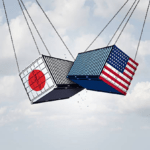


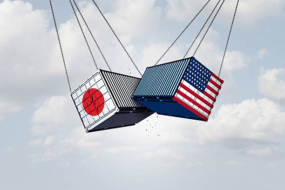
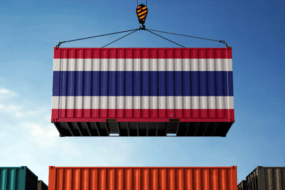
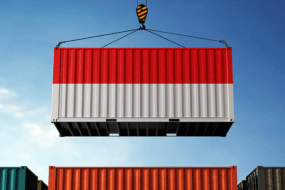
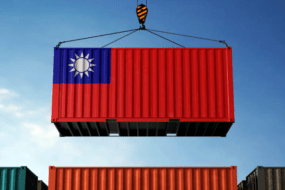
One reply on “2022 Trade Flows of Russia”
[…] local demand. For more info on Russia’s imports and exports, we have gathered the country’s trade flows in […]